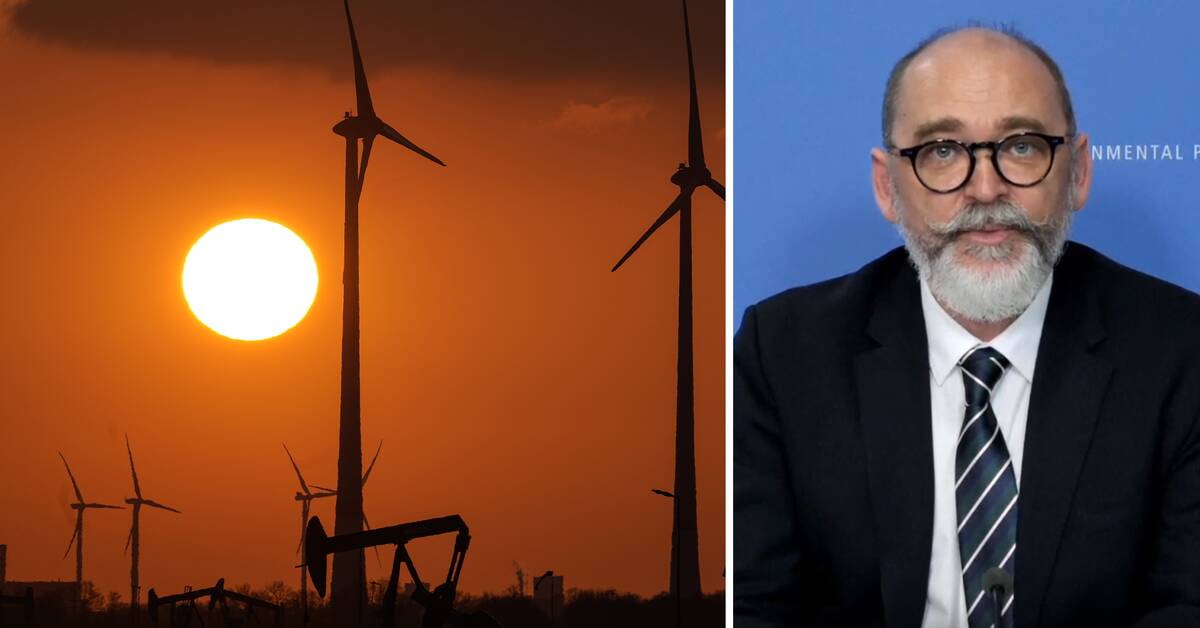Today, the UN Climate Panel released the report "Limiting climate change" and it states that it is urgent now for us to meet both 1.5- and 2-degree goals.
For that, emissions must begin to decline before 2025. And by 2030, emissions should be at just under half the current level to meet the Paris Agreement's target of 1.5 degrees, writes the climate panel.
Must reverse the curve
Several industrialized countries, including Sweden, have in recent years succeeded in reversing the curve.
But globally, the world's greenhouse gas emissions have increased by 12 percent since 2010.
How will the world then cope with this challenge to go from fossil energy sources to renewable?
There are more positive trends according to the IPCC.
The cost of technology that enables green energy has fallen sharply.
Solar energy is 85 percent cheaper, wind power is 55 percent cheaper and the cost of lithium-ion batteries is 85 percent than they were in 2010. This is a development that can also benefit developing countries.
Develop and save the climate
- Developing countries usually claim that they must develop first and then reduce emissions.
But now we see that more developing countries are undertaking to reduce emissions.
This means that the traditional conflict development versus saving the climate is no longer as clear as before, says Lars J. Nilsson who is professor of environmental and energy systems at Lund University and author of the IPCC report chapter 11 which deals with industry.
The Climate Panel concludes that new solar and wind power have the potential to be able to reduce emissions most cost-effectively by 2030. They provide four times more emission reductions than what new nuclear power can contribute.
Among other things, the high cost of final disposal has been included in the cost.
Cement, steel and plastic
In addition, attention is also drawn to the fact that the use of materials such as cement, steel and plastic is increasing in the world.
They account for large greenhouse gas emissions.
- We write in our chapter that the demand for these materials must be curbed.
They must be used more efficiently and recycling improved and we need fossil-free raw materials for the chemical industry, says Lars J. Nilsson.
Another way to reduce the amount of carbon dioxide in the atmosphere is to capture the one we have already released or to take it directly to the factory chimneys.
It is a technology called carbon capture.
The IPCC has calculated that there are storage facilities in the earth's bedrock for a total of 1000 gigatons of greenhouse gases.
That is more than enough and would help us reach the 1.5 degree goal.
But so far, carbon capture has only been introduced on a very small scale.
Great need for investment
- There is a need to increase investments in renewable energy, electricity and transport infrastructure, energy efficiency, etc., says Lars J. Nilsson.
The IPCC writes that investments in systems that will enable the world to meet the 2-degree target must increase three to six times.
Money and capital are available.
But governments need to make it easy and safe to make these investments.
- Research and innovation are not enough.
Market-creating measures are also important.
For example, reducing risks with investments, expanding systems for better recycling, strengthening electricity networks, says Lars J. Nilsson.

